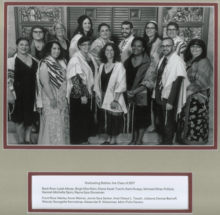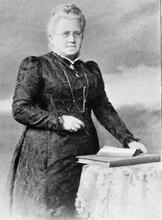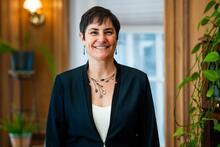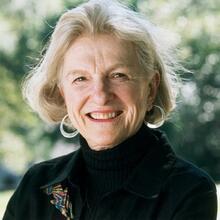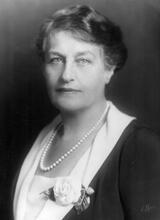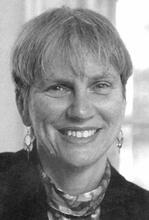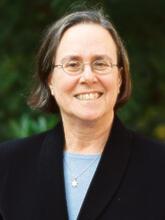Higher Education Administration in the United States
At the roots of both the Academy and Judaism lie a passion for knowledge – the love of learning, the necessity for debate and discussion, and an appreciation for the challenge of scholarship. Not until after World War II did many Jewish women stay in academia to become professors. Gradually they began to take on more roles as department chairs, deans, and senior university administrators, in both secular and Jewish institutions. Regardless of their synagogue affiliation, involvement with Jewish activities, or commitment to Judaism, Jewish women administrators generally share a spirit of inquiry, a sense of community, perseverance, and a passion for equity. While such traits are not exclusive to Jewish tradition, many of the women interviewed believed that these ideals were integral to their lives as Jewish women administrators in higher education.
The Academy and Judaism share similar values. At both their roots lies a passion for knowledge—the love of learning, the necessity for debate and discussion, an appreciation for the challenge of scholarship. This would suggest no mystery in the number of Jews in universities. However, it is women’s space in these intellectual settings—historically unwelcome by the academy and unsupported by Jewish scholarly institutions—that poses the wonder.
Historical Context
Higher education began as an enterprise by and for men. In the United States, women’s formal entry into higher education came less than two hundred years ago, in the 1830s. Many colleges established before the Civil War were single-sex institutions and backed by Christian denominations; some state colleges and universities, established before and after the Civil War, began as single-sex (male) institutions, but soon became coeducational.
As the twentieth century progressed, the route to becoming a senior university administrator became more formal. Women’s colleges needed some women administrators, especially to assist with student housing. However, the pattern was established early, even in most women’s colleges, that men, not women, should be the guardians of academic standards and the presidents of institutions. Entry into the professoriate with a doctoral degree (usually in arts and sciences) was followed sequentially by experience as chair of a department or director of a program, dean, provost or vice president for academic affairs, and finally a presidency. Since the proportion of doctorates awarded to women hovered around twenty percent throughout the twentieth century, the likelihood of a woman becoming a university administrator has always been small, even without taking into account the traditional pattern of male leadership in higher education. The first women in university administration were in women’s colleges, or as dean of women, or in fields such as nursing and home economics. Even though today women make up a greater percentage of mid-level managers, professors, and student affairs professionals, they have yet to achieve a majority within the upper administrative positions (Nidiffer & Bashaw, 2001).
Despite large-scale immigration of Jews from Eastern Europe in the late nineteenth and early twentieth centuries, Jewish women formed only a small proportion of the female undergraduate population before the 1920s. While Jewish women’s enrollment began to increase in the middle decades of the twentieth century, universities still discriminated against Jewish individuals. Jewish students were marginalized in university culture—attendance at prayers was often compulsory, at least at private colleges and universities, and sororities and fraternities refused admission to Jews. Admissions practices also discriminated against Jews in less overt ways. The elite women’s colleges, in particular, grew as “socioeconomically and ethnically homogeneous communities,” building thriving centers of intellectual stimulation and opportunity for white upper-middle-class women. But schools such as Barnard (with a more recent history of Jewish women leaders), Vassar, Bryn Mawr, and Wellesley maintained subtle policies such as “geographic diversity” or more blatant quotas to control the “Jewish problem.” Growing interest in higher education at women’s colleges by Jewish women prompted fears that a large Jewish population would endanger the “Christian missionary spirit” of a college, or simply devalue the prestige of these growing elite institutions. These factors, however, did not stop Jewish women from enrolling in college, and they helped to increase camaraderie among Jewish students. To combat discrimination, Jews responded by increasing the number of Jewish fraternities and sororities and establishing centers for Jewish students, such as Hillel. Such organizations continue to thrive today, allowing individuals to delve further into their cultural and religious heritages.
The tides of change also brought a gradual shift away from the overt discrimination against Jews in admissions policies, as well as a relaxing of rules for religious practice, particularly in public institutions, which enabled Jews to enter colleges and universities with greater comfort in the second and third decades of the twentieth century (Gordon, 1990). “The Jewish immigrants, few though they were, played their part, directly and indirectly, in the reform of higher education” (Gorelick, 1981, p. 59). Over the years, Jews were able to overcome these obstacles, even allowing Jewish women to surpass their non-Jewish women counterparts in academic success.
However, not until the end of World War II, when the demand for university teachers expanded, did many Jewish women (and men) stay in academia to become professors in colleges and universities. Jewish women were prominent in the development of feminist scholarship and the foundations of Women’s Studies. However, their identity as Jewish women is rarely reflected in the literature. As they matured as scholars, some chose or were chosen to become department chairs, deans, and senior university administrators. For instance, in 1963, historian Barbara Miller Solomon was named associate dean of Radcliffe College, and in 1970, she became the first woman dean at Harvard College. From 1977 to 1992, Claire M. Fagin served as dean of the School of Nursing at the University of Pennsylvania; during the academic year 1993–1994 she served as the university’s interim president. In 1978, Frances Degen Horowitz became vice chancellor for research, graduate studies, and public service and dean of the Graduate School at the University of Kansas; in 1991, she became president of the Graduate School and University Center of the City University of New York. In the 1980s, more Jewish women gained deanships at universities, such as Elaine L. Cohen at Notre Dame University, June T. Fox at Lesley College, and Joan N. Burstyn at Syracuse University, while Daryl Goldgraben Smith became Vice President at Scripps College, Judith Walzer, Provost at the New School for Social Research, and Ellen Futter, President of Barnard College.
During the 1990s, Jewish women began serving as administrators in all levels of higher education. Some younger women with degrees in business and management became financial officers or deans of schools of business; others with degrees in Higher Education and Student Affairs became student affairs administrators, or assistant deans like the previous Assistant Dean for Student Affairs Rochelle Robbins at Boston University, who went on to serve as Director of Field Education at William James College. Several were appointed to presidencies, including Hannah Friedman Goldberg (Wheaton College, MA), Shirley Strum Kenny (SUNY–Stony Brook), and Judith Shapiro, who was provost at Bryn Mawr College before being appointed president of Barnard College in 1994, where she served until 2008. Judith Rodin, who became dean of the Graduate School at Yale University in 1991 and provost in 1992, was appointed President of the University of Pennsylvania in 1994, the first woman to be named to the presidency of an Ivy League institution. (Rodin stepped down from her position in 2004, becoming president of the Rockefeller Foundation.)
In the twenty-first century, the number of Jewish women in higher education continues to grow at all levels of administration: as entry and mid-level professionals in Student Affairs and Academic Affairs, as Deans, and as senior-level university administrators. In 2004, Nancy Cantor was named the eleventh chancellor at Syracuse University, the first woman in the school’s history; in 2014, she became the second Chancellor of Rutgers University-Newark. In 2004, Amy Gutmann was named eighth President of the University of Pennsylvania, and in 2016 her contract was extended to 2022, making her the longest-serving president in the history of Penn. In 2014, Sally Kornbluth was appointed Duke University Provost; she was reappointed to a second five-year term in 2019. The Honorable Shelley Berkley was named the Chief Executive Officer and Senior Provost for Touro University’s Western Division in 2014. Prior to joining Touro, she served the State of Nevada in the United States House of Representatives from 1998 to 2013, the first woman to represent the district. In July 2017, Marjorie Hass became the twentieth President of Rhodes College, in 2018 Maud Mandel was named the eighteenth President of Williams College, and in 2019, after 22 years of senior leadership and faculty roles, Rachel Schreiber became the Executive Dean of Parson’s School of Design.
In the last decades of the twentieth century, women also gained senior administrative positions in Jewish institutions, such as Anne Lapidus Lerner (former vice chancellor, Jewish Theological Seminary, the first woman to hold this post), Rena Spicehandler (Dean of Students, Reconstructionist Rabbinical College), and Marsha Edelman (Dean, Gratz College). Women have continued to make great strides in the twenty-first century. In 2014, Deborah Waxman [link to new entry on Waxman] became the first woman rabbi to head a Jewish congregational union and seminary when she was named President of the Reconstructionist Rabbinical College. In June 2020, Shuly Rubin Schwartz became the eighth Chancellor of the Jewish Theological Seminary and the first woman to lead the academic and religious institution in its 134-year history. While these women face different problems from those in secular institutions, they, too, experience the need to negotiate multiple roles.
Understanding, Jewish Identity
When Jews first came to America, Orthodox traditions of belief and practice were the only form of Jewish observance. As the demands of American lifestyles made Jewish observance more difficult, the Reform Movement, with its less rigid interpretations of Torah she-bi-khetav: Lit. "the written Torah." The Bible; the Pentateuch; Tanakh (the Pentateuch, Prophets and Hagiographia)Torah and The legal corpus of Jewish laws and observances as prescribed in the Torah and interpreted by rabbinic authorities, beginning with those of the Mishnah and Talmud.halakhah [Jewish law], became increasingly attractive to those who wished to maintain their Jewish identity in a non-Jewish world. Individuals vary in the ways they define their Jewish identity even within these formal movements. Immigration, the Holocaust, the creation of the State of Israel, and assimilation into American culture have all contributed to shifting identities for the Jewish community, which has been called a “religion,” a “race,” a “nation,” and a “culture” (Borowitz, 1979, pp. 72–73).
As of 2000, some two hundred years later, the affiliated Jewish population in America identified itself in a survey conducted by the United Jewish Communities as thirty-five percent Reform, twenty-seven percent Conservative, ten percent Orthodox, and the remaining twenty-eight percent Reconstructionist or Other (National Jewish Population Survey 2000/2001). However, as noted in the 2016 project conducted by the Jewish Federations of North America in collaboration with The Berman Jewish Policy Archive at Stanford University, the 2000/2001 Survey had “a major research issue” due to the growing diversity of individuals’ Jewish identification. Therefore, the Pew Research Center’s “Portrait of Jewish Americans” from 2013 provides a better representation of the Jewish population in the United States. The Jews were divided into two categories, “Jews by religion” and “Jews of no religion,” acknowledging that not all Jews identify with Judaism religiously. Some Jewish women in higher education administration live their Judaism as a cultural commitment—a shared context of family and values, celebration and ritual, history and tradition. Most live their professional lives in secular spheres, where their Jewish identity (belief and practice) has to be negotiated.
To ascertain how being Jewish influenced their work in higher education, Burstyn and Bogad interviewed nine Jewish women administrators and focused on the aspects of their work that they attributed to their Jewish roots and identity. As these women attested, many Jews struggle with naming their connection to Judaism, which they perceive as more than just a system of faith parallel to other faith communities in the world. Bernstein later interviewed fourteen Jewish women administrators, asking them what aspects of their work they attribute to their Jewish roots and identity. Many of these women attested that the values they bring to the workplace are core Jewish beliefs, including a commitment to “Tzedek” (justice) and a focus on “Tikkun Olam” (repairing the world).
The women interviewed by Bernstein, Burstyn, and Bogad varied in their religious affiliations. Some identified as members of the Reform or Conservative movements but had no direct involvement with Jewish organizations or formal affiliation, while others belonged to synagogues, where they were involved in their children’s Jewish education and active members of the executive boards. Interviewees’ involvement in Jewish community activities were also influenced by geographical location, the size of the Jewish population, and the general ethos of the college and university communities to which these women belonged. Those with young children, particularly, commented on the difficulty of juggling university administration, family, and Jewish communal activities; faced with these challenges, they often curtailed communal activities. One woman interviewed by Burstyn and Bogad saw this curtailment as a reason why, now that her children were adults, she had only a minor role in the Jewish community. Another regretted her lack of time to further her own Jewish learning even while she fostered others’ learning daily. One interviewee from Bernstein’s research noted that she decided to seek outside opportunities to grow in her Judaism, as she needed an outlet to be with young academic-minded Jewish adults because she could not be her “full authentic self” at work.
Some of the women interviewed held positions in Jewish organizations, such as serving as advisor for the university’s Hillel or B’nai Brith, as synagogue board members, or as officers in Jewish community organizations such as Hadassah and community councils. Others became speakers and/or volunteered often for Jewish organizations such as the Anti-Defamation League. Some taught college courses in Jewish Studies and Education and/or facilitated diversity and social justice trainings, while others incorporated their interests in Jewish identity into their research, including the publications, “A History of Jews in American Higher Education” (Kolko, 2003) and “The Journey of Identity Development for Jewish Millennial College Students” (Kushner, 2009).
Some women interviewed commented on the intertwining of their Jewish community involvement and their university lives. One woman suggested that her dual roles in Jewish community and university community “feed off one another,” a leadership role and prestige in one realm leading to leadership and prestige in the other. Another woman wished that at times she could separate the two roles, desiring to attend Jewish holiday services as a synagogue congregant but often being addressed by her university title even in that context.
Geographic Location of Jewish Women Administrators
The percentage of Jewish women administrators at four-year colleges is greatest in the region where the largest number of Jews live. This is not the region where there are the most four-year colleges and universities, even though that region might suggest more opportunities in administration. Four-year colleges and universities across the country fall into a slightly different distribution, most heavily weighted to the southern part of the United States (Digest of Education Statistics, 2018). Burstyn and Bogad’s sample consisted of eighty-two Jewish women administrators, fifty-five percent of whom held positions in the northeastern part of the United States. (Eighty percent of these women self-identified as Jewish, while twenty percent were identified by other means.) Another seventeen percent held positions in the Midwest, fifteen percent in the South, and thirteen percent in the West. Bernstein’s sample included fourteen Jewish women administrators from a range of institution types: large four-year public institutions, large four-year private institutions, one small private religiously affiliated school, and a small private liberal arts college. Regionally, twenty-nine percent were in the Southeast, twenty-one percent in the West, twenty-nine percent in the Northeast, and twenty-one percent in the Midwest.
Influence of Being Jewish on Administrative Style
While some women were able to articulate why their attitudes towards work were rooted in Jewish values, others could not. For instance, one of the participants from Burstyn and Bogad’s research shared that “having a liberal approach to education, one that valued intellectual creativity over rote learning ‘felt Jewish.’” These women also attributed many of the attitudes about which they spoke to other sources: to family influence, to social and cultural norms, to intergenerational experiences, to university ethos, and/or to personal work ethic.
Several women said they drew upon metaphors from Judaism to explain situations to themselves and others. One described her job as “that of the Rashi of the rules and regulations,” and many other Jewish women educators also seemed to be inspired by Rashi Some considered the Jewish metaphors they used to be cultural. Bernstein found that some women described their experiences as “outsiders-within.” Others considered their Jewish metaphors as religious, bound to Jewish morality and Jewish observance. One woman described her concern for life at the university in the here-and-now, as opposed to primary concern for shaping its future, as the “Fiddler on the Roof syndrome,” inherited from the need for Jews to be ready to move at any time.
Jewish women administrators’ also mentor Jewish students, particularly Jewish women. On campuses with few Jewish staff members, these individuals are often asked to serve as authorities on Jewish issues, consulted by the President, the upper administration, and academic faculty on religious issues, particularly those affecting the academic calendar. A few interviewers described themselves as “the token Jew,” a role they are proud to hold. They explained that if they do not speak up on Jewish belief systems, no one else will. Others discussed hate speech on campuses, debating whether the issue arises in different ways on public versus private institutions, noting the importance of free speech, and condemning hate.
Many other interviewees described the importance of social justice, noting the difference between equity and equality on their campuses. They explained that they often use their own campus positions to support other underrepresented populations, while also being careful to not focus on “Oppression Olympics.”
Finally, some women struggled with naming their connection to Judaism in the workplace, due to their ability to “pass as white” and as a member of the majority culture and to their colleagues’ unfamiliarity and/or naivete towards Jews.
Intertwined Allegiances
When questioned if their Jewish identities impacted their administrative styles, the women interviewed were unable to point to a specific element. Frances Degen Horowitz (1988) wrote that “Jewish women bring into their academic experience a double consciousness about difference being female and being Jewish” (p. 12). Most women we interviewed had difficulty disentangling the influence on their work of being Jews and being women. Several expressed their concern for the well-being of faculty and administrative colleagues, which might have grown out of either their socialization as women or their upbringing as Jews. However, some did distinguish between the influences of Jewishness and femaleness. One woman drew upon having “rakhmones” (compassion) for others as the source of her concern, while several others attributed their concern to their parents’ commitment to helping others. Still others felt they brought to their work a profound understanding of the role of diversity in society that grew out of their experience as Jews. Such double consciousness about difference is not shared by all Jewish women academics, however. A few of the women we interviewed, who live and work in cities with large, active Jewish populations, claimed never to have experienced, as Jews, being an outsider. By contrast, women living in areas with large churchgoing populations often felt like outsiders in a world of Christian hegemony, having to often remind their colleagues they were Jewish; they may have also been the first Jewish person someone ever met.
Some women felt a sense of purpose that came from being a Jew in a secular setting such as the Academy. One named her “passion” as arising from her Jewish past. For some this passion was visible in the value they placed on education, in their love of learning, in their intensity for rigorous scholarship and debate in the tradition of Talmud and A type of non-halakhic literary activitiy of the Rabbis for interpreting non-legal material according to special principles of interpretation (hermeneutical rules).midrash. Others connected this passion to a general sense of personal ambition and drive, handed down from grandmothers, in the “tradition of strong, Jewish women.” One woman noted that she found herself encouraging students to take a stand on issues, often posing to them the question, “Is this something you believe in?” Another noted that her “maternal instinct kicks in” with students.
Throughout all of the interviews, Bernstein, Bogad, and Burstyn found that the women had many shared experiences. Regardless of their synagogue affiliation, involvement with Jewish activities, or commitment to Judaism, the women shared a spirit of inquiry, a sense of community, perseverance, and a passion for equity. While such traits are not exclusive to Jewish tradition, interviewees believed that these ideals were integral to their lives as Jewish women administrators in higher education.
Borowitz, E. (1979). Understanding Judaism. Cincinnati, OH: Union of American Hebrew Congregations.
National Jewish Population Survey, (2000/2001). Retrieved from https://www.jewishdatabank.org/databank/search-results/study/307
DellaPergola, Sergio. 2016. “World Jewish Population, 2016,” in Arnold Dashefsky and Ira M. Sheskin. (Editors) The American Jewish Year Book, 2016, Volume 116 (2016), (Dordrecht: Springer) pp. 253-332.
Digest of Education Statistics: 2018. National Center for Education Statistics, 2018. Retrieved from https://nces.ed.gov/programs/digest/d18/
Gordon, L. Gender and Higher Education in the Progressive Era. New Haven, CT: Yale University Press, 1990.
Gorelick, S. City College and the Jewish Poor. New Brunswick, NJ: Rutgers University Press, 1981.
Horowitz, F. D. (1993). “A Jewish Woman in Academic America.” In Seeing Female: Social Roles and Personal Lives, edited by S. Brehm. New York: Praeger, 1988.
Horowitz, F.D. “Jewish Women, Jewish Life and the Academic World.” Unpublished invited address, Jewish Lecture Series, Queens College.
Kolko, V. B. “A history of Jews in American higher education.” Journal of the Indiana University Student Personnel Association (2003): 20-32.
Kushner, K. “The journey of identity development for Jewish millennial college students.” Journal of the Student Personnel Association at Indiana University (2009): 29-42.
Nidiffer, J., & Bashaw, C. Women administrators in higher education: Historical and. contemporary perspectives. Albany, NY: State University of New York Press, 2001.
A portrait of Jewish Americans: Findings from a pew research center survey of US Jews. Pew Research Center, 2013 Retrieved from http://www.pewforum.org/2013/10/01/jewishamerican-beliefs-attitudes-culture-survey/

